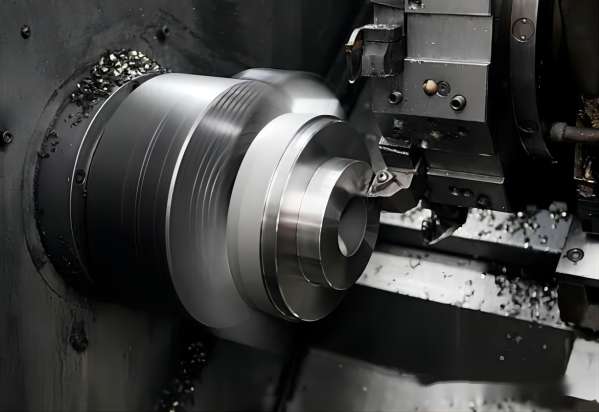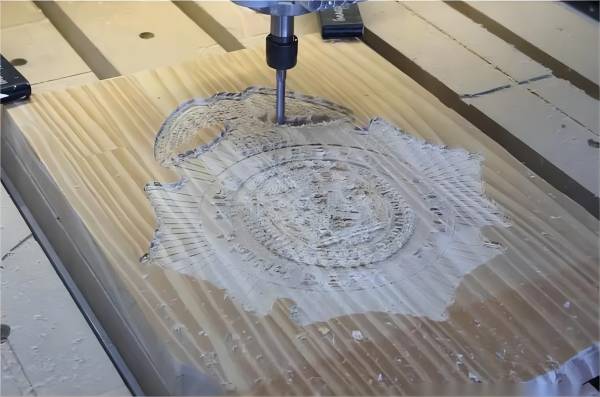
Privacy statement: Your privacy is very important to Us. Our company promises not to disclose your personal information to any external company with out your explicit permission.
There are many types of CNC machining machines, including lathes, milling machines, engraving machines, and grinders, which utilize different tools for different machining and manufacturing. Depending on the size of the machine, the type of motor required varies. When using these machines for CNC machining, CAD software is needed behind the scenes to allow the machine to move. Today, let us introduce you to the five types of CNC machining tools that you should not know when CNC machining.
CAD Software
CAD (Computer-aided design) for the abbreviation of computer-aided design, through the CAD software, can help designers draw 2D drawings, or manufacturing 3D models. Using 3D CAD models, the various steps in the design process, including sharing, reviewing, simulating, and correcting, can become easier and make the process more efficient. The following introduces several CAD software commonly used in CNC machining modeling.
Auto CAD
AutoCAD is a set of multi-dimensional CAD software. Using AutoCAD for CNC machining can automate the workflow from design to production.
Tinker CAD
Launched in 2011, Tinker CAD is a free online 3D CAD software that has become quite popular. Due to its easy-to-use interface and wide applicability, Tinker CAD is a very suitable software for teachers, students, amateurs, and designers.
Free CAD
First released in 2002, Free CAD is a free and open source software designed around parametric modeling, mainly used in mechanical heavy product design, but also can be used in the field of architecture or electrical engineering.
Blocks CAD
Blocks CAD is a free 3D CAD software with an interface made of Colorful blocks stacked like Legos. Although modeling is still not easy, this software can help children or beginners who want to start learning modeling but have encountered a problem.
Fusion 360
Fusion 360 is a professional 3D CAD software with powerful parametric and analytical meshing tools, which is a great tool for industrial designers.Fusion 360 is free for students or educators, but for commercial use, there is a fee.
Open SCAD
Released in 2010, Open SCAD is a set of free software designed to create solids, allowing designers to create accurate 3D models, as well as parametric designs. openSCAD has a slightly higher threshold for use than other softwares, and is suitable for those with a high level of modeling requirements, and is now gradually being used in research and education.

Lathe
The lathe is a tooling machine in the CNC machining process that dates back to the ancient Egyptian period. During the Industrial Revolution, lathes played an important role and are therefore also known as the mother of all trades. During CNC lathe machining, the machining tool is fixed on top of the lathe and rotates at high speed to cut the raw material until the machining is completed.
Lathes are used in a wide range of applications, such as machine building, metal fabrication, and equipment maintenance, and CNC lathes are often used to assist in operations. The components that make up a lathe include a cast iron frame, tool holders for flat cutting, various types of tools, drive equipment, and control equipment. Electric motors operate at different speeds through belts, machines, cams, and turntables in the conveyor system to drive the entire drive. The degree of automation varies from lathe to lathe. When the operation of a lathe is driven by a computer program, it is called a CNC lathe.
Milling Machine
Lathes work by rotating the workpiece on the lathe itself, while the tool does not rotate on its own. Milling machine is the opposite of a lathe, the milling machine's processing method is by the rotation of the tool, the milling machine itself will not rotate, through the rotation of the tool to cut the raw material, in order to complete the processing.
Milling machines are common industrial machines, so there are many different types of milling machines, often with only minor differences between them, because different purposes, designs or functions require the use of different types of milling machines. Milling machines are often used for drilling and cutting different materials. Generally speaking, the machining purposes achieved with a milling machine are similar to those of a lathe, but the difference is mainly in the rotation of the machine.
Like lathes, milling machines can be operated manually or controlled by a computer. A computer controlled milling machine is called a CNC milling machine, where a computer program controls the milling machine to complete the CNC machining process. There are very many types of milling machines such as vertical, horizontal, column, turret, bowframe (C-type), bed type, gantry type, etc.
Tooling
When utilizing a lathe or milling machine, different tools must be used to complete the machining operation. Divided into turning tools and milling tools, turning tools are suitable for cutting workpieces on lathes, while milling tools are used for milling workpieces on milling machines. In the process of CNC machining, the tool is fixed on the lathe or milling machine to remove the material in order to complete the machining.
A turning tool is a tool used on a lathe to rotate, bore, groove, and thread the workpiece, and a milling tool, the milling machine itself moves to complete the milling. The tips of the cutters come in different shapes and sizes depending on the needs.
End Mills
End mills can mill at multiple angles or along an axis. End mills can be used for contour milling, die milling, surface milling, thread milling, and other applications.
Roughing Mills
Roughing cutters utilize wavy teeth and can be used to remove a large amount of material at the beginning of machining, and the removed portion creates chips that are easy to clean up.
Ball Milling Cutter
Similar to a slot drill, a ball milling cutter has a hemispherical cutter and is suitable for three-dimensional milling in the center, such as for mold and die making.
Motor
First of all, CNC engraving machines vary in size and the type of motor they are suitable for. Smaller CNC engraving machines are better suited for drive motors. Generally speaking, drive motors are better suited for linear machining paths, such as belt drives, leadscrews, ball screws, and other smaller jobs. On larger scale CNC engraving machines, they tend to bend due to their large size. In order to prevent deformation, it is therefore more suitable to use a servo motor with a larger size and heavier weight.
The two motors also move in different ways, the drive motor moves in a set number of steps, the machine itself cannot know the movement of the drive motor, while the movement of the servo motor will be transmitted back to the machine, so you can always be sure that the motor in the operation of the process of whether the error.
In terms of speed and torque, the running speed of the drive motor is about 1,200 RPM, and it can generate high torque at low speed, and the faster the speed, the smaller the torque. The servo motor can reach 2,000 RPM, which is higher than the drive motor, and the torque is higher than the drive motor.
As for maintenance, except for bearings, other parts of the drive motor cannot be repaired. The servo motor is easier to repair than the drive motor.

LET'S GET IN TOUCH

Privacy statement: Your privacy is very important to Us. Our company promises not to disclose your personal information to any external company with out your explicit permission.

Fill in more information so that we can get in touch with you faster
Privacy statement: Your privacy is very important to Us. Our company promises not to disclose your personal information to any external company with out your explicit permission.